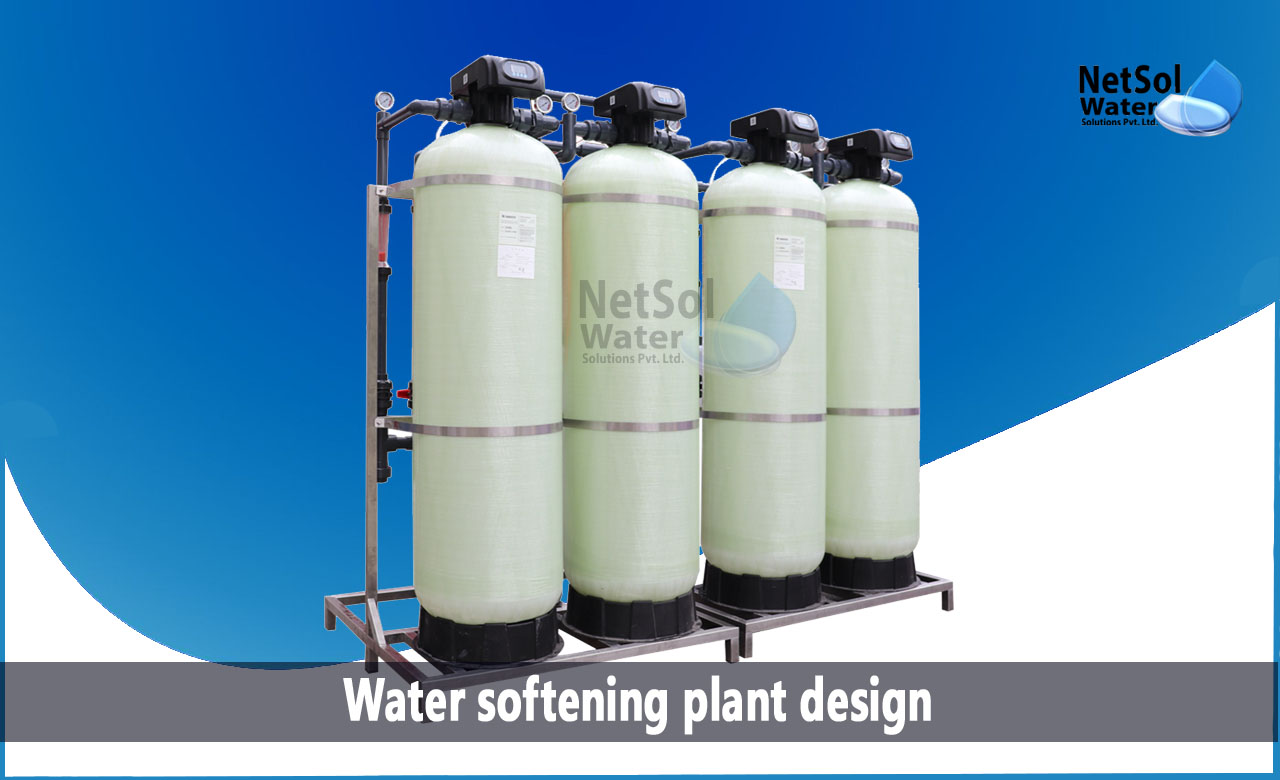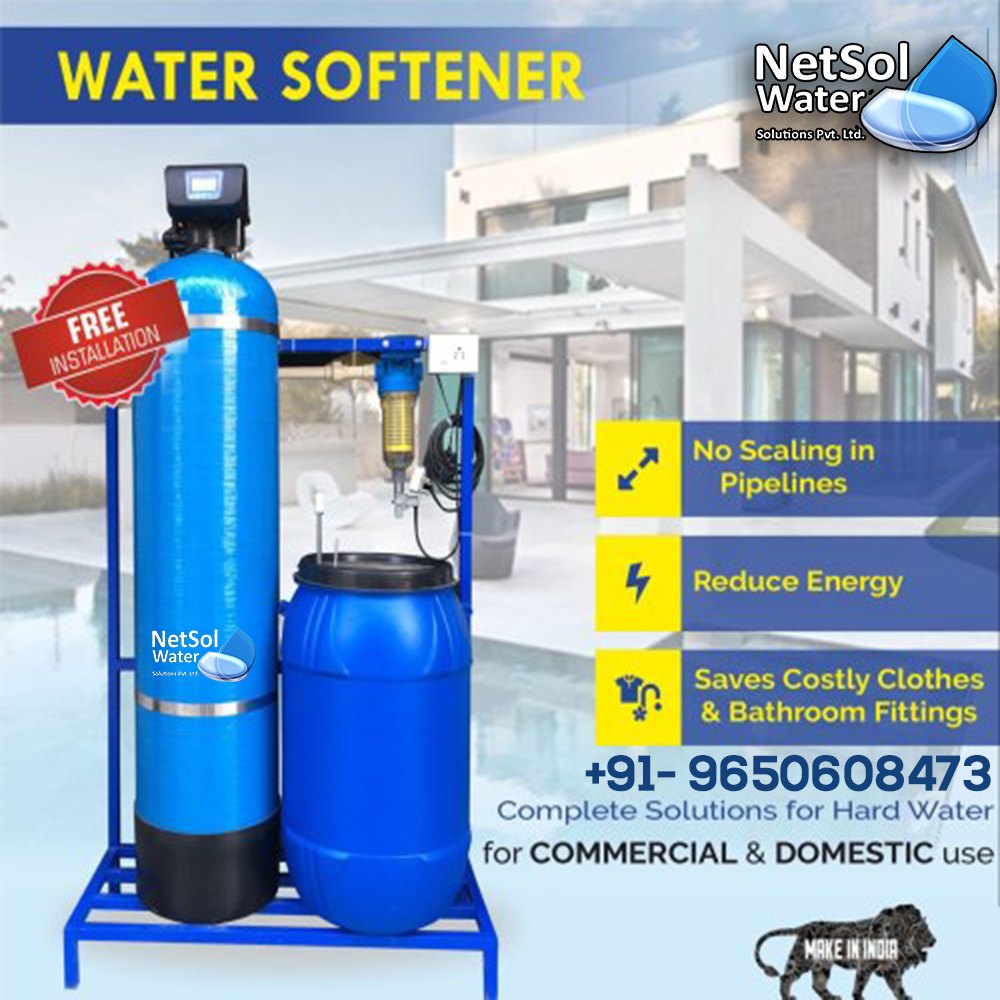The water softener design guidelines are meant to serve as a foundation of knowledge, for general-purpose water softening applications, including household use, industrial non-critical processes, low pressure boilers, cooling towers, and RO and DI pre-treatment.
Pre-treatment for water softeners
Prior to boiler, cooling, and reverse osmosis systems, water softeners are used which are ion exchange systems, created to remove the calcium and magnesium ions that cause scale to form. It is possible to choose from a wide variety of softener sizes and configurations, with selection based on elements, such as water quality, system demand, and overall application.
In industrial applications, it's crucial to choose a softener that's the right size to prevent hardness, from getting to crucial system parts. Due to the hard water in these systems, both over and under-sized softeners can cause significant issues.
What are the factors to consider before designing water softeners?
1: Choose the control valve you wish to use based on the service flow specifications of the application. The primary goal is to choose a valve that gives a tolerable pressure drop from the softener's intake, to output at the service flow specifications of the application. For the valve alone, use a maximum service flow pressure drop guideline of 15 psi (1 bar).
2: Determine the volume of cation resin needed. The amount of cation resin is typically governed by four factors:
a. Service flow rate;
b. Water hardness;
c. Amount of water to be treated; and
d. Frequency of softener regeneration (i.e., valves with flow metres allow multiple regeneration per day).
It usually takes up to two hours to regenerate, and it can take up to three hours (depending on temperature), to create a saturated salt solution in the brine tank, making three times the practical maximum number of regenerations per day.
Size of a water softener
To prevent issues with hard water, softeners need to be properly sized. There are considerations to make when sizing a water softener:
· Water that needs to be softened overall
· Water capacity for softening (hardness removal) via softener resin exchange
· Maximum water flow rate after softening
Let’s understand the design of water softeners with the help of an example.
The following example will make the design of water softening plants clear:
(i) The water's hardness is 550 mg/litre of CaCO3
(ii) The quantity of treated water = 25000 litres per hour
(iii) Permitted hardness in the work after treatment = 50 milligrams of CaCO3 per litre
(iv) The resin's ability to exchange ions, which will be utilised in the plant = 10 kg/cu m of hardness
(v) Salt is necessary for the resin's renewal = 45 kg/cu.m of resin
The water softening facility is open for two 8-hour shifts each day. Any necessary data should be presumed.
Solution:
Amount of water that needs to be softened for each 8-hour shift
= 25000 × 8
= 2 x 105-liters.
Now that the water's hardness must be reduced from 550 mg/litre to 50 mg/litre, or 500 mg/liter net hardness must be removed.
= 500/550 × 100 = 90.9%
However, since the water softening plant removes 100% of the hardness, it is evident from the preceding criterion that the hardness of 90.9% of the water is removed, and must then be blended with the remaining 9.1% of raw water to produce treated water, with a hardness of 50 mg/litre.
Therefore, quantity of raw water that must have 100% of its hardness removed per shift
= 90.9/100 x 2 x 103 l= 187.2 cum
Hardness removed=
(187.2 x 550 x 1000)/ (1000 x1000) = 102.9 kg
Required cation exchange resin =
102.9/10 = 10.29 cum
Give 7 water softening plants, each with 1.7 cubic metres of cation exchange resin. Each unit must have a surface area of 1.0 square metres, and a resin depth of 1.7 metres. Therefore, five units will treat the required amount of water, and one unit will serve as a standby while other units are being repaired.
Regeneration
After 7 hours of water softening, the unit must be regenerated during the final hour of the shift, by running a 10% solution of table salt (NaCl) through it. For this regeneration, water from the balance tank must be used. It will be made up for by the standby unit.
Salt quantity needed for regeneration
Zeolite resin density is 45 kg/cum.
= 45 × 8 kg = 360 kg
The amount of 10% brine solution and the brine solution volume
= (360 × 100)/10 = 3.6 cum.
For the regeneration work, two numbers of balance tanks with 1.8 cu m capacity each can be offered.
Keeping the tank's side square and the depth of the water at 1.0 w
B = 18 1/2=1.3416 m = 1.35
The overall dimensions of each tank will be 1.35, 1.35, 1.15 m, assuming free board of 15 cm.
Verify the contact time
Water flow rate across the softened bed
Amount of water treated every shift/7 hours of softener operation
= 25400 litres per hour.
Rate of filtration=
Rate of water volume being passed/ Surface area of units
= 25400/5*1.0 liters/m2/hour
= 84.67 liters/m2 per hour
Given that each bed has a depth of 1.7 m, we may calculate the average travel time during the contact period.
= 1.7 / (10-3) x (84.67) minutes
= 20.23 minutes
Conclusion
Particular considerations are needed for more demanding applications, like high-pressure boilers, medical autoclaves, and water sources with problematic pollutants, like iron and manganese. As a result, you should seek advice from expert sources like Netsol Water.
Manufacturer of water softeners
Water softeners for commercial and industrial use are among the water and wastewater treatment solutions, which Netsol Water specialises in. We put a lot of effort into providing stable, premium solutions for organisations.




